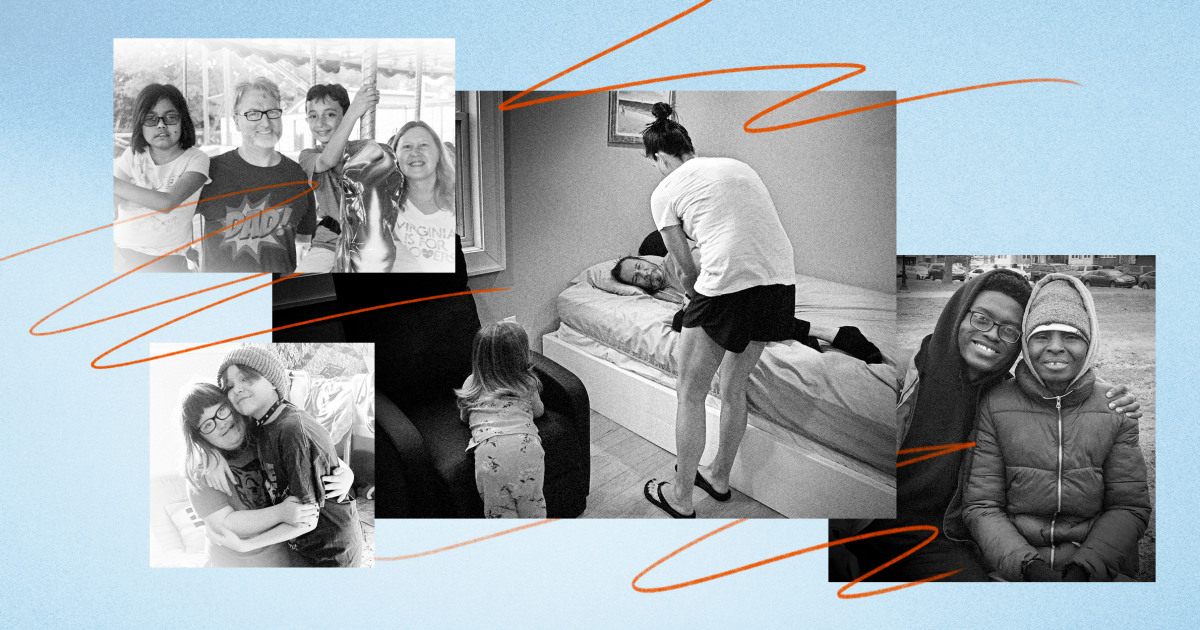
Many of these programs, funded jointly by states and the federal government, have higher income thresholds than regular Medicaid: Most states offer services to older or disabled adults earning up to 300 percent of the maximum Supplemental Security Income benefit, or about $2,400 per month for an individual. Many children with disabilities or complex medical needs are also eligible, regardless of their parents’ income. Full-time home care can cost $4,500 per month, according to a recent survey by insurance company Genworth, which is unaffordable for many families.
But while the federal government requires states to fund nursing home care for everyone who qualifies, states are not required to do so for most in-home care and community-based services. That has led many states to cap enrollment, creating waitlists.
Further complicating matters, each state has different standards for who qualifies, which services are covered and which groups get priority. And the waitlists are an imperfect measure of the need: Some states screen families for eligibility before allowing them to join the waitlist, while others allow anyone to join and screen them when they get to the front of the line.
In 2018, some states reported that no seniors or physically disabled adults were waiting for services under the Medicaid programs, according to the Kaiser Family Foundation’s report, while other states had tens of thousands waiting. Nationwide, most of those on the waitlists in 2018 were people with intellectual or developmental disabilities, making up nearly 600,000 — more than 70 percent — of the total.
They include Geoffrey and Andrea Carpenter’s 14-year-old daughter, Lila, who has been on the waitlist for eight years in Virginia. Lila is autistic and intellectually disabled. She can only speak a word or two at a time and has ADHD and mood disorders that require psychiatric medications. She loves musicals and swimming and is caring and affectionate when she feels comfortable, her mother said. But she can quickly become agitated and violent — behavior that has become more difficult for her parents to manage as she has grown.
“She has a lot of challenges navigating the world,” Geoffrey Carpenter said. “She can be triggered by an odd sound, an unexpected event or just asking her to wait another five minutes. If she’s tired or hungry, you might get something thrown at you.”
Even a few hours of care every week or month would make a huge difference, said Geoffrey Carpenter, a budget analyst for the Pentagon. While Andrea Carpenter stays at home full time because of Lila’s intensive needs, they struggle to balance her care with caring for their 11-year-old son, who loves hiking and being outdoors. Lila cannot handle many public settings and social gatherings and cannot be left with an ordinary babysitter; she would require a trained caregiver who came often enough to become a familiar presence — which the family cannot afford.
The Carpenters also worry about their daughter’s future, after she finishes school. “As time marches on, relying on a system that has failed this far really weighs on you,” Geoffrey Carpenter said.
Rising demand
Long waitlists have prompted some families to sign up their young children even before they have a pressing need for services in hopes that they can enroll by the time they are adults and avoid being forced into institutions. States usually prioritize those with emergency needs, such as the loss of a caregiver, but many states also allow people to enroll for future needs.
In Texas, more than 28 percent of those on the waitlist have been standing by for a decade or longer, according to state figures.
After her 9-year-old daughter was born with Down syndrome, Julie Ross immediately put her on the waiting list out of concern for her future. Niko, who loves dancing and drawing, has a limited range of motion, uses a wheelchair some of the time and needs help with tasks like getting dressed and bathing. Ross has been waiting for so long that she worries Niko may not receive services even by the time she is an adult. The Medicaid programs could help Niko with in-home care as an adult and provide transportation and support at work.
“I want her to live with the highest level of self-determination in the community and in her own home,” said Ross, 45, who works in advertising and is a board member of The Arc of Texas. “I’m not going to live long enough to be her direct caregiver forever.”
Many states expanded these programs after a landmark 1999 Supreme Court decision said people with disabilities should receive publicly funded services in “the most integrated setting appropriate” to their needs. The ruling has allowed more people with disabilities to stay at home with their families and to live independently.
But the growth of these programs has not kept up with demand, especially as more families are turning to services that help older adults age in place. And worker shortages have meant that even those who qualify for care may have trouble finding home health aides, personal care attendants and nurses — a long-standing problem under Medicaid and in the broader long-term care industry. The shortage became even worse during the pandemic given the low wages and working conditions that exposed hands-on providers to the virus.
John Adeniran, 23, hopes home-based care can help him look after his 65-year-old mother, Elizabeth, who moved in with him after she developed early onset Alzheimer’s. The Philadelphia resident is now juggling caregiving with his full-time job as a social media analyst, helping her bathe and brush her teeth, preparing her meals and reminding her to eat.
“I wanted to care for my mom, who has held me up over all these years,” said Adeniran, whose parents emigrated from Nigeria. “Especially in my culture, you’re supposed to take care of your parents.”
Adeniran chose his job because it allowed him to work remotely, even before the pandemic, so he could look after his mother at the same time; he sets up his laptop in her room and plays music that she enjoys. But his daily schedule is crunched, as are his finances, as he shoulders his mother’s medical bills along with his student loans and a mortgage. “The hours end up blurring into each other,” he said.
Adeniran started the application process for in-home care through Medicaid, in hopes of getting help with meals and transportation and a few hours of in-home care a week. But he has been discouraged by the lengthy process, on top of the challenges of getting health insurance for his mother through Medicaid as well.
“Home and community-based services are exceptionally hard to access even if you qualify,” said Adeniran, who also works as a fellow for Caring Across Generations, an advocacy group for caregivers. He believes lawmakers should expand in-home care funding to meet the growing demand — since it’s an issue that can affect everyone. “Either you are going to receive care or need to provide care later in life,” he said.
‘We’re just waiting to hear’
Under the pandemic relief bill passed in March, Congress provided a temporary 10 percent increase in federal matching funds for Medicaid home- and community-based services — an estimated $11.4 billion boost in federal spending, according to the Kaiser Family Foundation. But states are unlikely to make dramatic changes to their programs, because the funding increase lasts just one year. By contrast, the $400 billion that Biden proposed spending would bring far more sweeping transformation to the programs, which cost about $92 billion in 2018, experts and advocates say.
Democratic leaders, however, dropped the home-care funding from the bipartisan infrastructure deal that was announced on Thursday, conceding to Republican criticism that it did not qualify as infrastructure. Biden said, however, that he would only sign the infrastructure bill if Congress also passes a separate package that would include funds for caregiving.
That could include a bill that Democrats introduced Thursday to expand eligibility and access to Medicaid home- and community-based services, helping states reduce waitlists and increasing pay and benefits for home health workers. Democrats can pass certain spending bills without Republican votes, but would need support from every member of their razor-thin Senate majority, and 10 Democratic senators have yet to sign on to the new home care bill.
“No one should have to wait to get the care they deserve, and no care worker should have to live below the poverty line to give this care,” Rep. Debbie Dingell, D-Mich., who co-sponsored the House version of the bill, said in a statement.
Having watched their father deteriorate so quickly inside an institution, Morgan Champion and her sister, Jamie Champion Mongiovi, know it was the right decision to bring him home: The conditions inside the memory care facility were filthy, they said, and their father lost nearly 30 pounds from December, when they had last seen him, to May.
At home, he is able to go for walks outside — a huge change from the facility, which was locked down during the pandemic. A few days ago, Jim spoke a few words, including Morgan’s name, for the first time in two years.
Source: | This article originally belongs to Nbcnews.com










